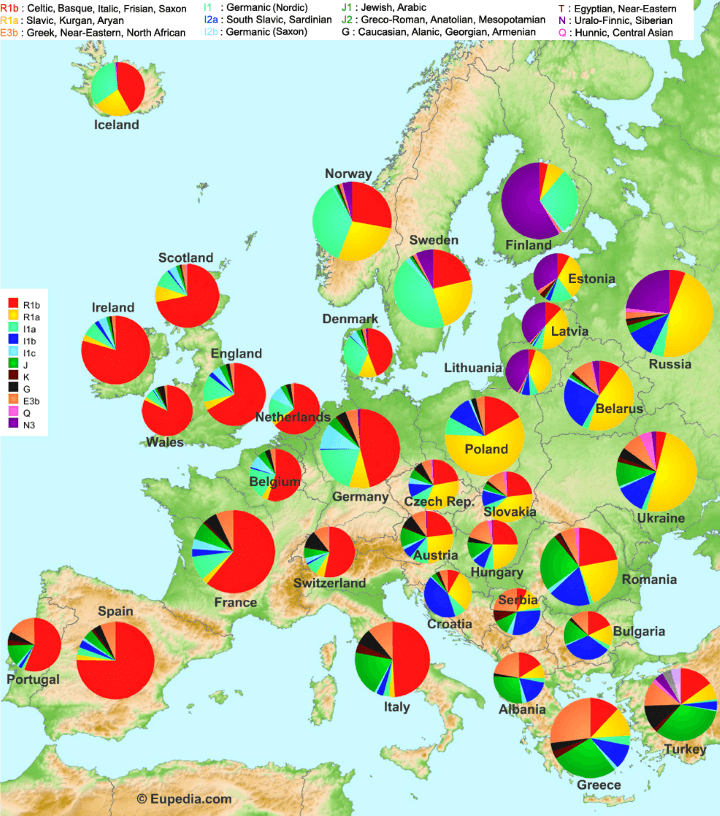
Maps are most familiarly organized by nations and ethnicities, not DNA. The above map, however, designed by eupedia.com, shows the genetic composition of countries in Europe based on haplogroups. Haplogroups are major ancestral branches on both your mother’s side and your father’s side of the family. They correlate with early human migrations and specific geographic regions.

Each haplogroup descends from a common ancestor, and provides a way for us to understand the genetic composition of a given population. Haplogroups are based on either Y-DNA, which is passed exclusively from father to son, or mtDNA, which is inherited by children of both genders from the mother. The above map, in particular, is based on Y-DNA haplogroups.
Here are some interesting things observable from the map:
- Iceland has the fewest number of haplogroups in Europe.
- The British Isles share much more genetic commonalities with France, Belgium, and the Netherlands than they do with Denmark, Norway, and Sweden.
- Haplogroup N3 is essentially nonexistent in the British Isles.
- In terms of observable haplogroups, Greece and Albania are quite alike.
- The farther north you go in Europe, the harder it is to detect Haplogroup J1 (Jewish, Arabic).
- Although geographically close to Sweden and Norway, Finland looks genetically very different, having more similarities with places like Estonia and Lithuania.
- Haplogroup I1a is far more distributed in Nordic countries, e.g. Norway and Sweden, while only faint traces of it can be found in Southern European areas.
- Bulgaria and Romania are extraordinarily similar to one another.
- The haplogroup compositions of the Czech Republic, Austria, and Hungary aren’t exactly identical, but very comparable.
- Although Germany and Austria are both German-speaking countries, they’re very clearly genetically distinguishable from one another.
- Haplogroup N3 is observable all over Eastern Europe, but it’s practically nonexistent in Western Europe.
- Greece’s genetic makeup has a lot in common with Turkey’s.
- Genetically speaking, Latvia, Lithuania, and Estonia are extremely similar.
- The Balkans is likely the most genetically varied area of Europe.
- The genetic compositions of Norway and Sweden are practically mirror images of each other.
- The genetic makeups of the British Isles, Germany, France, Spain, Portugal, the Netherlands, Switzerland, Belgium, and Italy all have a very high percentage from haplogroup R1b.
- Haplogroup R1a is one of the most predominant haplogroups in Nordic regions and Eastern Europe. While in Western Europe the most prevalent haplogroup is clearly R1b.

